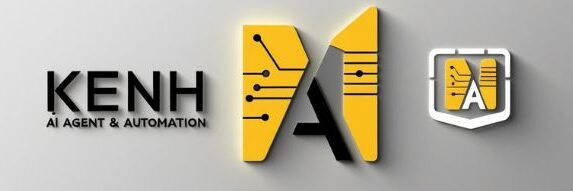Midjourney Prompts That Actually Work for Branding
In 2025, successful branding is no longer about hiring a designer and waiting weeks. With AI tools like Midjourney, anyone can create stunning, on-brand visuals with the right prompts. But here’s the catch: most prompts don’t work for strategic branding. That’s where AI Agents, automated workflows, and the MCP framework come into play—bringing intelligence and brand coherence to the design process.
Let’s dive deep into how to craft Midjourney prompts that actually work for branding—and how to connect them to your broader AI-powered business ecosystem.
The Rise of AI Agents in Branding
In the traditional model, branding required teams of designers, marketers, strategists, and weeks of feedback loops. Now, AI Agents are stepping in to handle everything from visual concept generation to color palette optimization.
What is an AI Agent?
An AI Agent is an intelligent, goal-oriented system that can work autonomously or collaboratively. In branding, agents can:
Generate visual concepts based on target audience personas
Refine Midjourney prompts based on market data
Maintain design consistency across campaigns
Adapt assets in real-time for multiple platforms
These agents are more than tools. They’re becoming virtual brand strategists.
Workflow Automation: The Future of Digital Brand Creation
Automating your design process doesn’t mean losing creativity—it means unlocking scalability and speed. With AI workflows, here’s what’s now possible:
Input a brand mood board or description
Automatically generate 10+ Midjourney prompts with style variations
Filter them using AI Agents for on-brand alignment
Sync final designs to your website or social media platforms
This shift enables startups and creators to compete with agencies—without needing massive budgets.
Real Use Case:
A coffee brand in Vietnam used Midjourney + GPT Agent workflow to generate 15 packaging mockups in 2 hours, filtered by an AI trained on customer emotion triggers.
MCP Framework: The Brain Behind Intelligent Visual Branding
To make this workflow even smarter, companies are now building on the MCP (Multi-agent Collaborative Process) architecture.
Why MCP Matters for Branding
MCP connects multiple AI agents into one seamless workflow. For branding, that could look like:
Visual Agent: Generates prompt ideas
Consistency Agent: Validates color, tone, font
Audience Agent: Matches the visual to persona data
Publishing Agent: Pushes final image to social channels
Rather than scattered tasks, MCP brings orchestration—which means every Midjourney prompt is part of a bigger strategy.
Midjourney Prompts That Actually Work for Branding
Let’s get to the practical part: the Midjourney prompts. These prompts are built for specific branding needs—whether for packaging, logos, social visuals, or mood boards.
1. Minimalist Logo for Tech Brand
Prompt:/imagine "futuristic minimalist logo, flat design, clean lines, tech company, blue and black tones, simple geometric symbol, branding icon, vector, white background" --v 5 --style 4b --ar 1:1
✅ Best for: SaaS, AI startups, fintech
2. Warm Natural Packaging for Organic Products
Prompt:/imagine "hand-drawn packaging design, organic product, earth tones, craft paper texture, Vietnamese coffee brand, sunlight, eco-conscious branding, stylized text" --v 6 --ar 3:2 --style raw
✅ Best for: Coffee, tea, natural cosmetics
3. AI Agency Website Hero Banner
Prompt:/imagine "futuristic office environment, AI branding concept, abstract neural lines, holographic elements, blue-purple gradient, tech startup hero banner, digital transformation" --ar 16:9 --v 6 --style 4b
✅ Best for: AI consulting firms, SaaS agencies
4. Luxury Skincare Branding
Prompt:/imagine "luxury skincare product flat lay, golden accents, white marble background, soft shadows, elegant font, minimalistic layout, premium branding concept" --v 6 --ar 4:3 --style raw
✅ Best for: Premium cosmetics, boutique brands
5. Cultural Identity + Modern Vibe
Prompt:/imagine "modern logo design infused with Vietnamese cultural elements, Đông Sơn pattern, minimal lines, red & gold tones, fusion branding, innovative identity" --v 6 --style raw --ar 1:1
✅ Best for: Local-to-global heritage brands
Supercharge These Prompts with AI Agents
So how do you use these prompts in a smart, scalable way? Here’s a sample AI-powered branding workflow:
Claude AI → Interpret brand voice and tone
GPT-4.5 → Generate refined prompt variations
AutoGPT → Loop through Midjourney results and score based on visual brand criteria
Publishing Agent → Auto-schedule social media banners or website updates
This end-to-end pipeline transforms your creative process from subjective guesswork into data-backed, AI-driven design.
Tips to Optimize Midjourney for Branding
Set fixed aspect ratios: Keep visuals consistent across platforms
Use
--stylesettings wisely: Try--style 4bfor modern branding or--style rawfor photorealismInclude brand attributes: Mention texture, color tone, design era (e.g., Bauhaus, minimal, vaporwave)
Pair prompts with audience emotion goals: Calm, exciting, elegant, trustworthy
Keywords to Target for SEO
Include these keywords naturally throughout your article and image alt text:
Midjourney branding prompts
AI visual identity tools
Best AI agent for design
Claude AI vs GPT-4.5
MCP AI framework
AutoGPT branding use cases
AI workflow for designers
Visual automation tools
Final Thoughts: Branding in the AI Agent Era
Visual branding in 2025 is not just about art—it’s about strategy, automation, and intelligence. With Midjourney prompts, AI Agents, and MCP architecture, businesses can build compelling brand identities in a fraction of the time and cost.
Ready to build your brand with intelligent AI Agents?
👉 Explore MagicLight AI Branding Suite and transform how you create.
